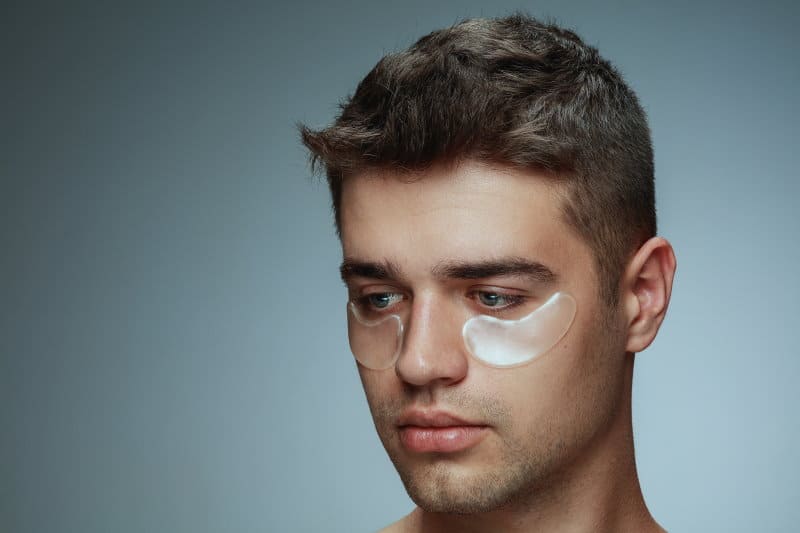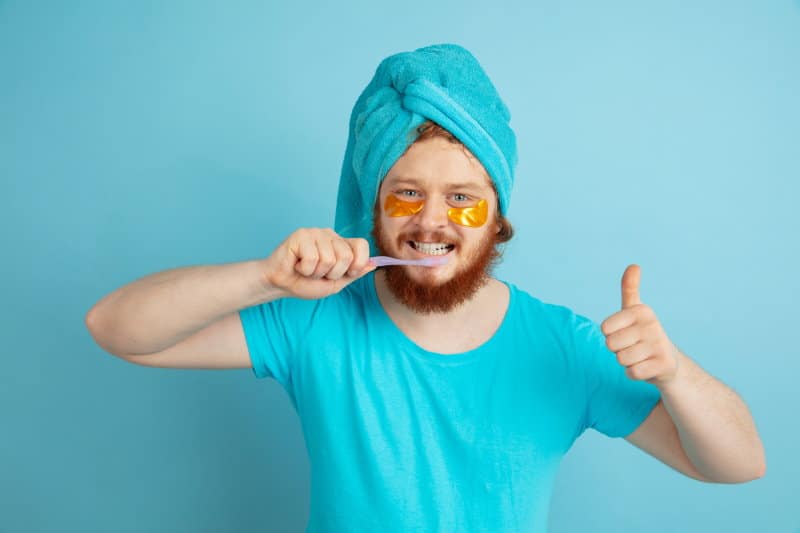If you spend any time on internet beard forums, you will see that there’s always some kind of hullabaloo about minoxidil and aging. Guys trade horrific anecdotes about crow’s feet and sagging eye pouches. Add to that some confusing studies about collagen levels, and there’s no shortage of alarmist minoxidil truthers braying that every beardsman should avoid the stuff.
There’s not much evidence that minoxidil causes face wrinkling. While some studies show the topical drug reducing skin collagen, these studies were not performed with humans. Virtually no accounts of face wrinkles exist from users of minoxidil. You can use the medicine on your face without worrying.
It is worth discussing in more detail what topical minoxidil does to your body and how it affects your skin’s collagen content. Then we can separate established facts from internet speculation.
Minoxidil and Your Body
Minoxidil, the medication in hair growth products like Rogaine, has been on the market for decades. During that time, countless doctors and researchers have studied how it stimulates hair growth. As of this moment, that research is … incomplete.
In total, researchers know that minoxidil, as a vasodilating drug, opens up blood flow to the tiny vessels that feed nutrients to follicle roots. In many cases, though not all, this causes dormant follicles to spring to life and sluggish follicles to speed up growth.
Minoxidil began life as a blood pressure medication delivered in capsule form. However, its hair-growing incarnation is most often a topical product: gel, lotion, foam, etc. Topical minoxidil is available without a prescription, and this medicine is what beardsmen generally apply to their faces, rather than scalps, to encourage beard growth.
The Facts About Collagen

All this kvetching about face wrinkles focuses on collagen.
Collagen is a protein that your body naturally produces. There are sixteen types of collagen, most of which function as resiliency boosters. It builds and maintains the flexibility of skin, bones, muscles, tendons, ligaments, cartilage, and blood vessels. If something is active and moving in your body, collagen keeps it that way.
As with so many things in your body, though, collagen production decreases as you age. Your bones become brittle. Your muscles become a bit weaker. Joints get stiff, and, yes, your skin starts to sag.
If you aren’t a medical professional, you probably only hear about collagen in reference to plastic surgery and cosmetics. Whether injected into lips, ingested in supplements, or smeared on the face – collagen products are all the rage for anti-aging.
The Collagen Panic
What does all this have to do with beards? Well, as minoxidil usage picks up steam for facial hair growth, lots of guys are noticing studies linking minoxidil use to collagen synthesis inhibition. In plain English, there’s some chatter that the grub lowers your collagen. As is always the case when guys on the web get a little data, they go into a tailspin of doom-saying.
If these folks are to be believed, the second you smear some Rogaine on your face, you will shrivel and turn to dust like the bad guy in Indiana Jones and the Last Crusade after choosing the wrong Grail.
Nuanced discussion and the internet do not travel together well. Things like minoxidil are either the fountain of youth or they’re poison. So, let’s look deeper at the fears and concerns surrounding this drug and its effect on your body’s collagen.
Minoxidil and Collagen – What We Know
Right off the bat, it is true that minoxidil can affect collagen in your body. This has been established. What’s less clear is the extent that this affects your skin.
Here’s what we know right now:
- Studies performed to look into minoxidil’s effect on collagen determined that it can inhibit collagen synthesis.
- These studies were performed on rats and cell cultures, not live human subjects. Their results can’t be unequivocally linked to possible effects on a full human body.
- Some collagen inhibition is likely beneficial to hair growth because it prevents perifollicular fibrosis, a sort of cellular scarring around follicles.
- Lots of research has been done on minoxidil over the years. Researchers have recorded evidence of many side effects, from rash to high blood pressure, but never increased skin-wrinkling.
- Most tellingly, while minoxidil has been in circulation with the general population for decades, widespread reports of skin wrinkles have never emerged.
On the other hand, the use of minoxidil on faces is relatively new. Applying the medicine directly to your facial skin might be marginally riskier than putting it on your scalp. With that being said, a few studies have been done on minoxidil usage for beard growth. They reported side effects but did not uncover any instances of skin sagging, creasing, or wrinkling.
In the Lab and On the Face

Remember the adage: absence of evidence is not evidence of absence. Just because no study has conclusively proved that minoxidil will cause wrinkles doesn’t mean it can’t happen.
However, many factors can lead to collagen reductions, including smoking, sugar, and exposure to the sun. For most people, a little minoxidil won’t be the deciding factor on whether your collagen content goes down.
Finally, and perhaps most importantly, collagen depletion is not the primary cause of creases and wrinkles on your face. These mostly form because of the accumulation of repeated facial movements, like smiling, speaking, or squinting.
With all this in mind, remember that every human body is different. One guy might see massive facial hair development with minoxidil, and another might see nothing. Similarly, the skin on your face might react badly to the drug. If you notice bags under your eyes or new crow’s feet, just stop using minoxidil. A slight wrinkling is neither the end of the world nor is it irrevocable.
Final Word – What are the Risks?
In total, the research around whether minoxidil will cause face wrinkles is unpersuasive. While it might have a marginal effect on your skin’s collagen content, this by itself is unlikely to substantively alter skin pliability or durability.
We recommend you ignore any amateur analysis of inconclusive research data and pay attention to minoxidil’s legions of users. There has been no recorded epidemic of premature aging from these folks. So, you should feel confident trying these products for beard growth.
One more thing: a little visible maturity is not the end of the world. Quite the opposite, a bit of face creasing and some salt in your beard is a pretty attractive look. If you don’t buy that yet, check out our exploration on salt-and-pepper beards.

